Overview of Littelfuse protection solutions for electronic systems
Littelfuse is a flagship brand whose products are distributed by TME, and in our catalogue you will find thousands of them – from passive and semiconductor components to sensors to electromechanical components such as contactors or switches.
Here, we will focus on the group of products that in fact were a starting point for Littelfuse. These are protection solutions implemented directly in electronic circuits.
For some time now, we have been witnessing considerable proliferation of battery-powered devices such as laptops, mobile phones, games consoles, as well as IoT (Internet of Things) industrial devices. It generally means that our homes and workplaces are equipped with an increasingly large number of devices comprising miniaturised (i.e. sensitive to overload) PCB circuits with cells that are capable of producing very high-intensity current. Moreover, such devices need to be regularly re-connected to the power grid (for recharging). Under such circumstances, issues related to circuit overload protection have become very important and complex at the same time, as circuit miniaturisation entails the necessity to produce compact protection measures.
Fortunately, manufacturers of electronic equipment devices can count on solutions from such suppliers as Littelfuse. Its product range comprises numerous and diverse solutions for circuits overload protection – from classic cylindrical fuses to SMD components. See below for the description of the product range, its breakdown, and general characteristics. Customers looking for solutions with defined specifications are invited to browse through our catalogue, where the entire range has been parametrised in detail.
Varistors
The basic property of varistors is the change in resistance resulting from the voltage applied. The Littelfuse ML series includes SMD format components, designed to be installed directly in a PCB circuit. With maximum currents of 30 A, 150 A or 180 A, they provide protection against mains overvoltage and ESD (electrostatic discharge). They are primarily intended for integrated circuit (IC) protection to ensure long life of stabilisers, frequency converters and other components frequently exposed to input voltage spikes. ML metal-oxide varistors included in the TME product catalogue are available in the 0603 and 1206 formats, and variants with maximum operating voltage from 2.5 V to 50 V AC and from 3.5 V to 68 V DC.
Note that the ML varistor series is compliant with a number of international standards – including two very important ones, i.e., IEC 61000-4-2 and AEC-Q200. The former refers to an item's resistance to electromagnetic interference. The latter confirms that the products can be used in circuits used in automotive applications, i.e., on-board computers, controllers, on-board instruments or multimedia systems.
SMD fuses
The TME product catalogue includes a great number of Littelfuse miniature SMD fuses. Such components are commonly installed in consumer devices such as phones, laptops, and portable gaming consoles. They are most used to protect PCB traces from burning out due to current intensity increase. Such failures can be caused, for example, by faulty components of battery charging circuits or voltage stabilisers, as well as external factors (such as flooding or contamination). A fuse helps protect a circuit from irreparable damage, but also protect users against burns or even fire.
The Littelfuse SMD range is divided into the following categories: time-lag fuses, normal fuses, and ultra-rapid fuses. The former is characterised by an extended response time (up to 120 seconds for overloads amounting to 200% of the nominal value), which facilitates their use in applications where current spikes are expected. Ultra-rapid elements can break a circuit already because of an overload lasting a few hundred milliseconds. These values depend on the model selected and its characteristics (higher current ratings usually result in longer response times).
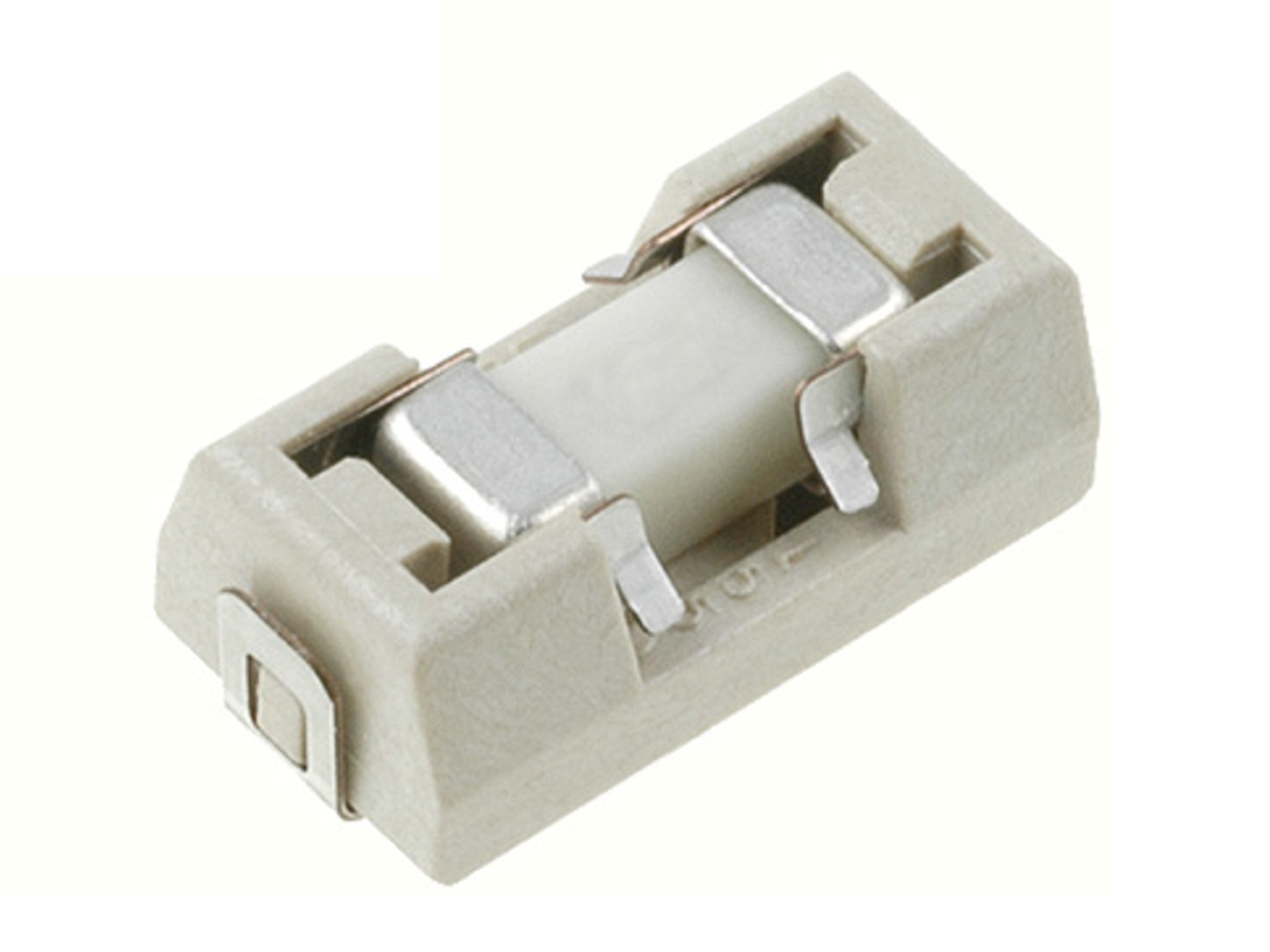
An SMD fuse mounted in a holder can be quickly replaced
This type of Littelfuse fuses comes in several formats. First of all, these are typical SMD enclosures (1206 and 2410), and also PICO SMD (7.24x4.32x3.05mm) enclosures. They are designed to handle a broad range of temperatures (mostly from -55°C to 125°C). The supplier’s portfolio includes components with rated currents ranging from 62 mA to 40 A, ensuring the breaking capacity of up to 1000 A. Selected products can handle mains voltages (250 V AC and higher), which also allows them to be used in chargers, power supply modules, computers, consumer electronics/appliances, and even industrial equipment.
Importantly, replacing blown SMD fuses does not necessarily involve soldering or interfering with the PCB structure. Littelfuse’s product portfolio boasts a broad range of SMD fuses with holders. Such solutions make it possible to use a replaceable SMD fuse, i.e., to retain a small footprint of the circuit protecting the system and facilitate the replacement of a blown component.
Polymer fuses
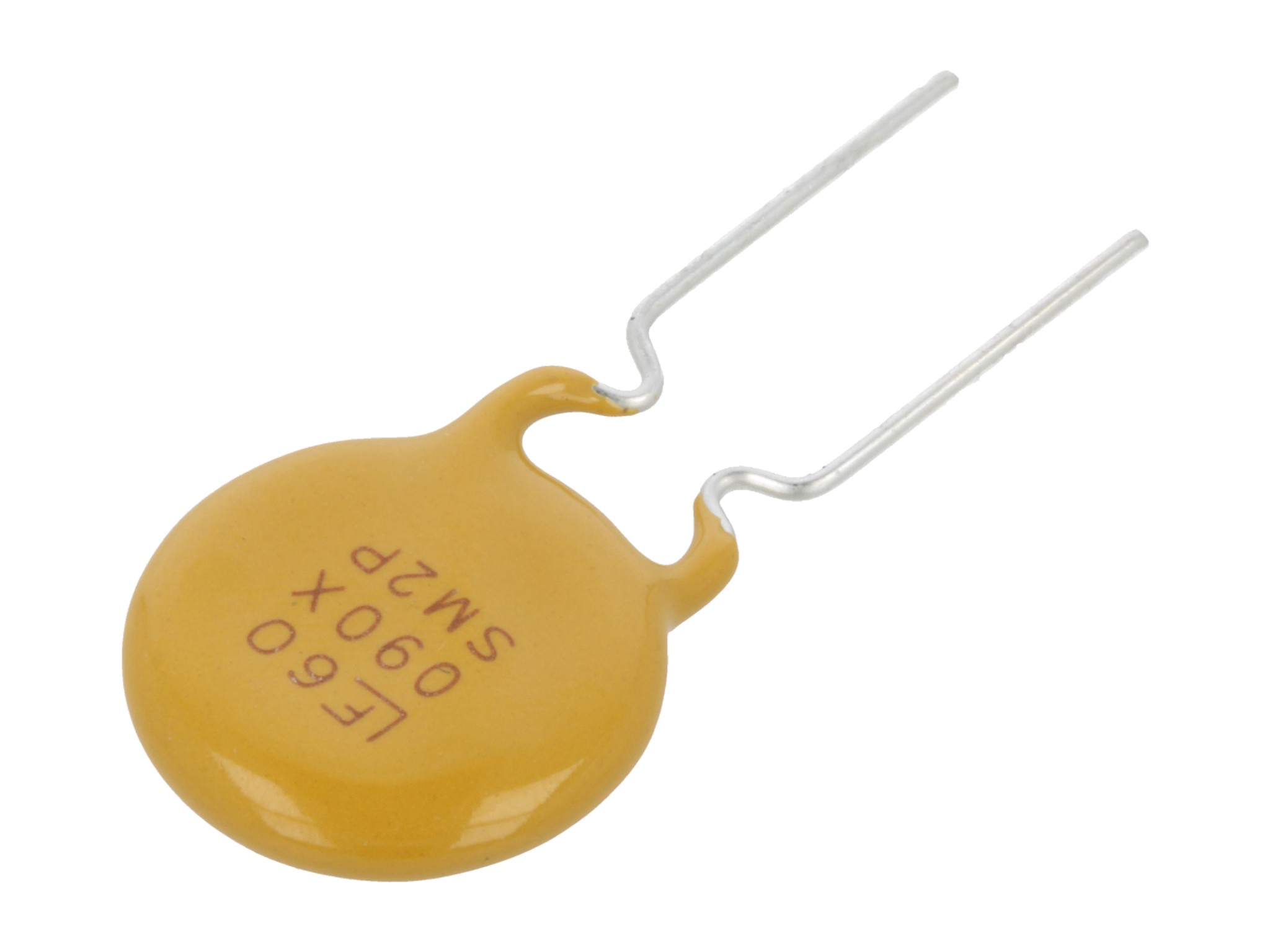
The main property of polymer fuses is their auto-reset feature
The main property of polymer fuses is their ability to both open a circuit exposed to increased current (causing overheating) and to reset, i.e. close it again, when the component cools down. Thus, the fuse protects devices from serious damage due to overload but does not need to be replaced if overload happens. Littelfuse polymer fuses come both in the SMD and THT variant. The low-profile design is their typical feature. The range offers a wide array of characteristics, i.e., the rated currents of the available models range from 12 mA to 13 A, with the ability to withstand voltages up to 240 V and surge currents up to 100 A. All polymer fuses included in the catalogue can operate at temperatures up to 85°C.
Safety diodes
A safety diode is another basic semiconductor component designed to protect electronic circuits. It is often used to bypass circuits controlling inductive loads (such as motors), which results in eliminating undesirable voltages that might occur at driver outputs, e.g., during forced movement of a motor axis). Such Transient Voltage Suppressors (TVS) are commonly applied in all circuits exposed to the overvoltage-related risks. They also help avoid damage caused by atmospheric and electrostatic discharges (ESD).
The trends towards miniaturisation of electronic circuits and devices have resulted in designing specialised solutions protecting power supply and data transmission inputs, such as diode arrays. In a single integrated circuit structure, housed in an SMD or THT enclosure, there are multiple safety diodes with independent outputs that ensure, for example, effective protection of USB ports against interference or wrong connection. Such circuits can sometimes have additional components apart from TVS diodes to ensure simultaneous protection for data and power supply lines.
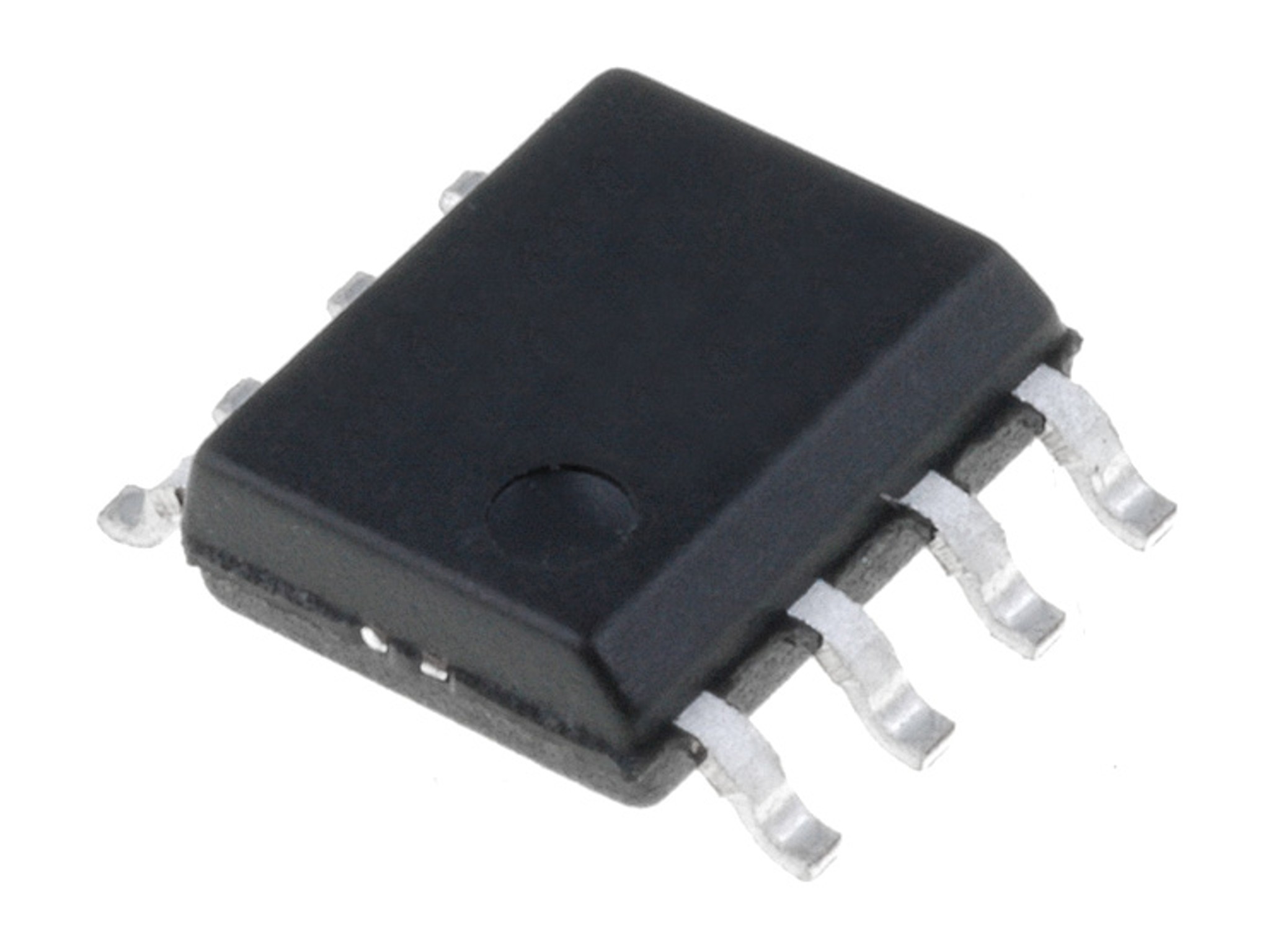
A diode array is a popular method ensuring USB/HDMI port safety
Safety diodes come with a wide range of characteristics, in one- and two-way variants, for surface and through-hole mounting, to meet the requirements of most typical applications. The characteristics of SMD elements include breakdown voltages up to 600 V, maximum inverse voltages up to 512 V, and their impulse current tolerance value can reach even 58.1 A.
Cylindrical diodes
In numerous fields related to electric and electronic equipment, cylindrical fuses remain one of the simplest yet most popular overcurrent protection devices. These are relatively small fuse elements, whose operation is based on the current-carrying capacity of a single conductor enclosed in a glass or ceramic cylinder terminated with contacts at opposite ends. As this design is apparently very simple, numerous low-cost variants of these elements are available on the market. However, it should be noted that only products from recognised brands (such as Littlefuse) guarantee fuse performance conforming to its specified characteristics. Savings made by using an inexpensive substitute can turn out to be superficial or even result in dramatic consequences. An example of disastrous ‘cost-cutting’ practices implemented by some suppliers is the failure to fill the ceramic cylinder with an arc-quenching medium (usually sand), which may lead to arc discharges in the fuse, which in turn results in its failing to perform its designed function at all.
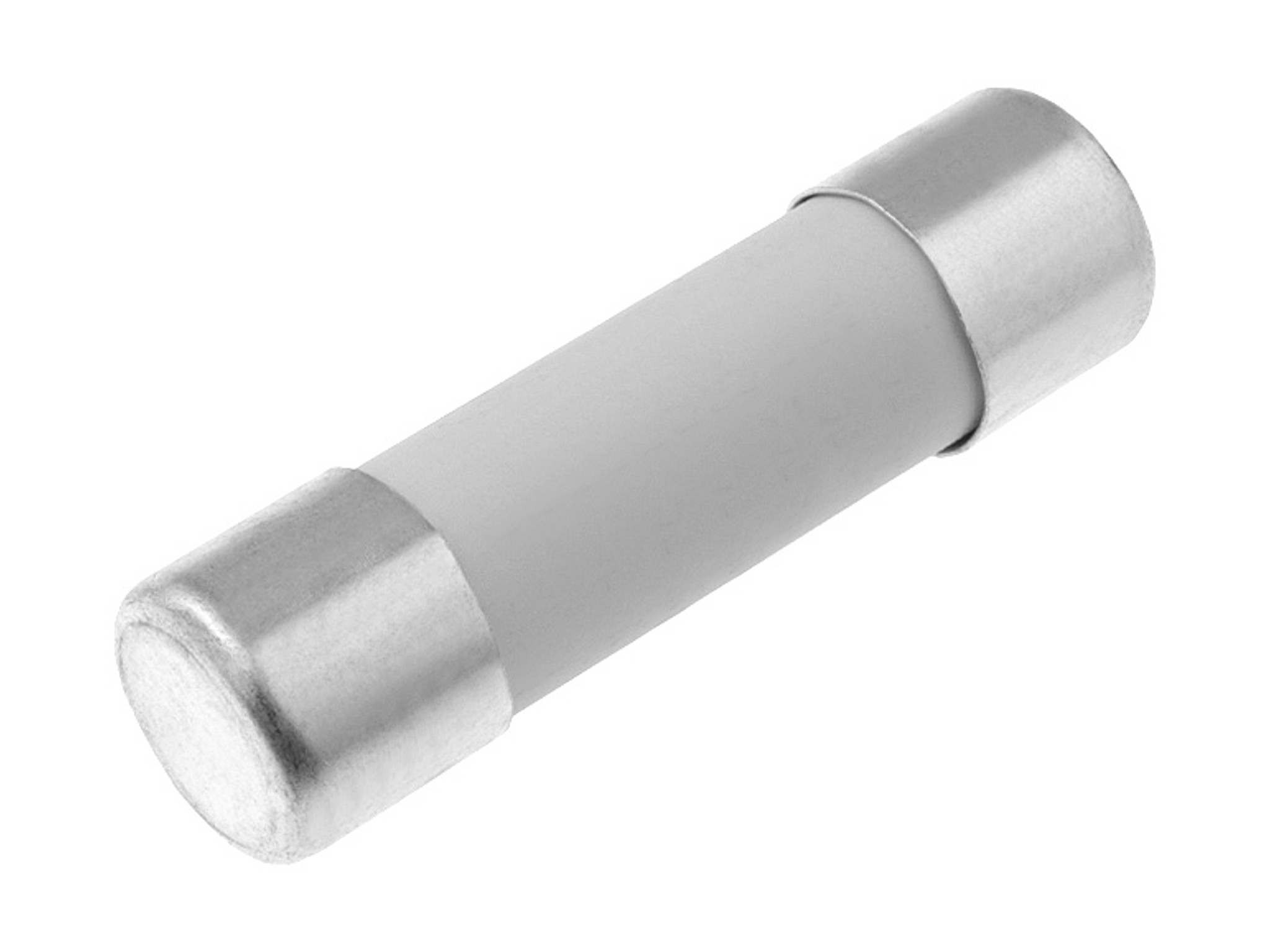
A correctly designed ceramic fuse is filled with an arc-quenching medium (usually sand)
The cylindrical fuses offered by TME come in all popular formats. The 5 x 20mm variants are characterised by rated currents ranging from 32 mA to 20 A, while for 6.3 x 32mm variants these values are from 10 mA to 40 A. The available products can withstand voltages up to 500 V AC, temperatures from -55°C to 125°C and are available in versions ranging from time-lag fuses to normal fuses. Our catalogue also features 5 x 15mm fuses.
PCB fuse bases
As cylindrical fuses are widely available and easy to replace, they are the solution of choice in all applications that do not impose stringent size requirements (e.g., white goods or industrial equipment). In order to integrate a cylindrical fuse into a PCB circuit, special fuse bases are used with either through-hole or surface mount outputs. To enhance user safety and reduce the contamination risk, insulating caps or other structural solutions (e.g., removable inserts) are often used to protect contacts against accidental touching. The Littelfuse product portfolio also includes such items. These are fuse bases withstanding currents up to 30 A and voltages as high as 1kV AC.
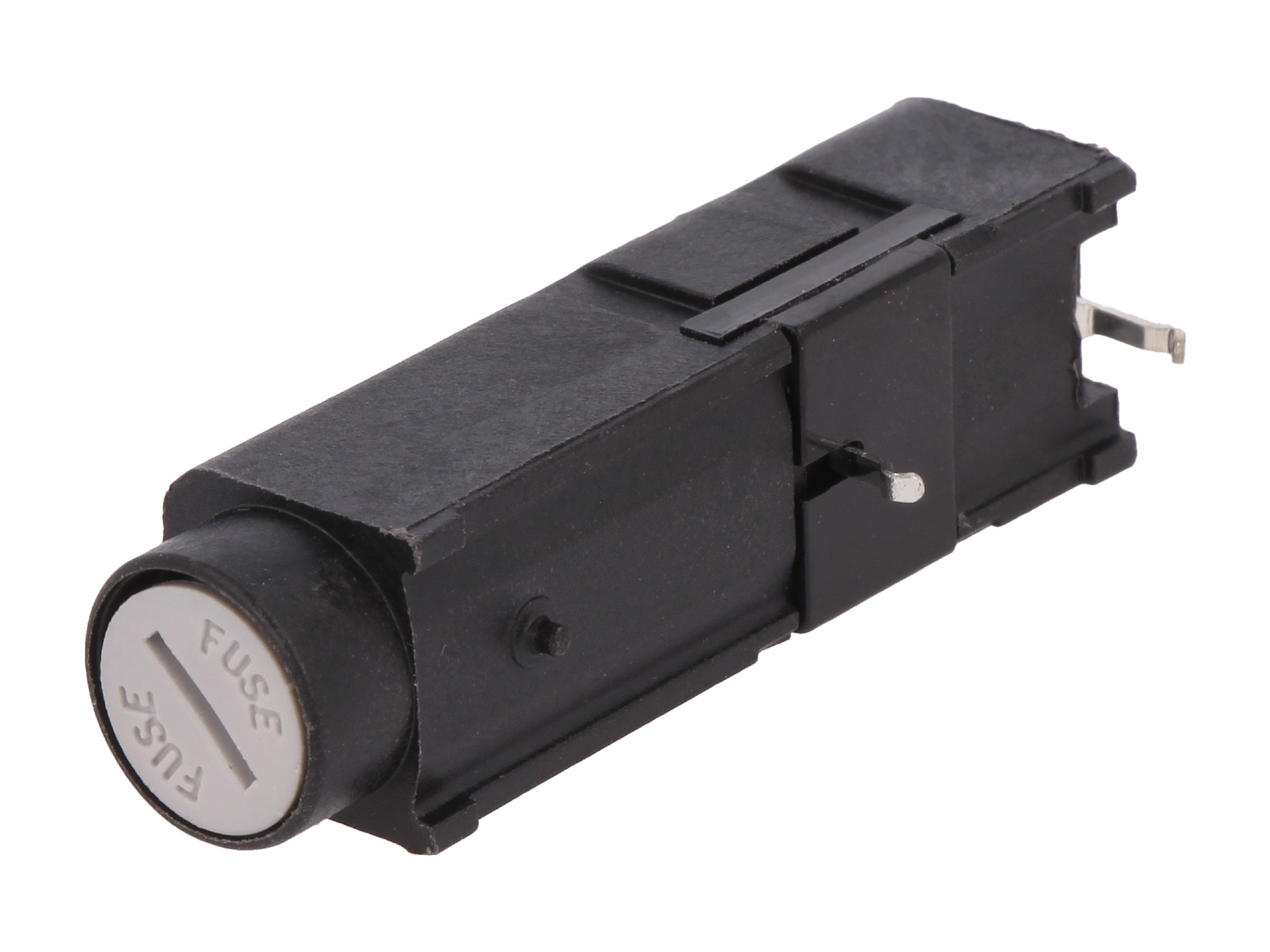
Fuse base for through-hole mounting with a fuse contact isolation insert
Axial fuses
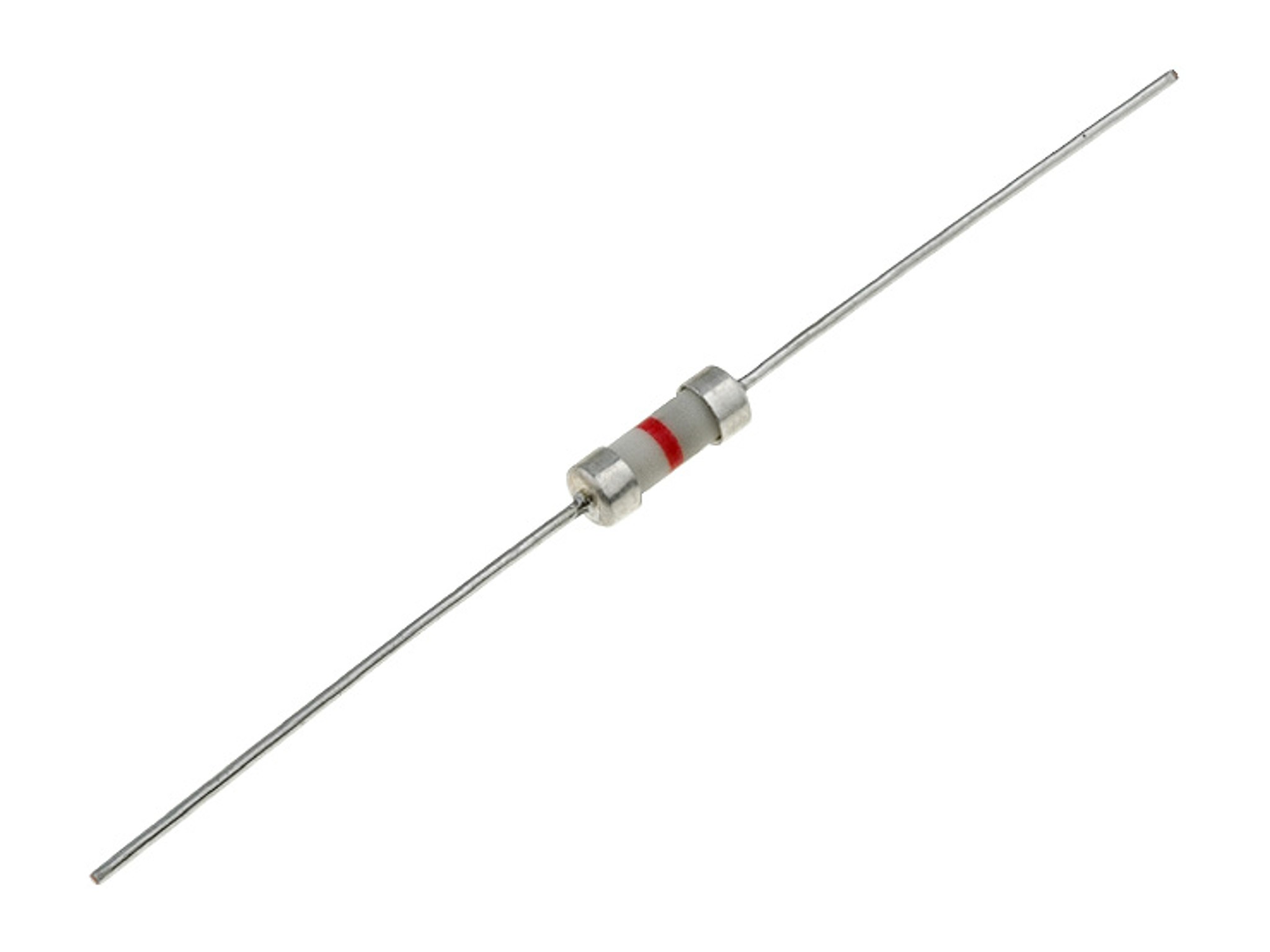
Axial safety fuses are attached to PCBs similarly to a typical resistor
Axial fuses provide a solution similar to cylindrical elements, but their contacts are additionally equipped with leads for through-hole assembly (THT). Thanks to this, a fuse can be placed directly in the circuit, and its size is significantly reduced (even 2.8mm in diameter and 7.1mm long). Such components are most often employed in circuits where the risk of a fuse blowing is relatively low, and in small-sized devices. Direct soldering of a fuse into a PCB is also a preferable method for equipment exposed to shocks and vibrations. Littelfuse axial fuse characteristics include rated current from 50 mA to 15A, time-lag, normal and super-rapid operation, and capability of withstanding voltages up to 350 V AC (with breaking capacity up to 4 kA). Depending on the product selected, it can be purchased as a single piece or in collective packaging (100 and 1000 pieces), i.e., a reel, ribbon and Ammo Pack.
TE5 and TR5 fuses
TE5 (cuboid) and TR5 (cylindrical) safety fuses have a small footprint and good electric parameters. Above all, they come in variants with very low current ratings (as low as 2 mA). They can be used in mains circuits, as a large proportion of them are adjusted to 250 V AC. The high breaking capacity of up to 10 kA is their additional advantage, which is why they are often used in chargers and power supply modules. Furthermore, thanks to high standardisation and THT leads (e.g., 5.08mm pitch), their implementation requires minimal effort on the part of designers and constructors.
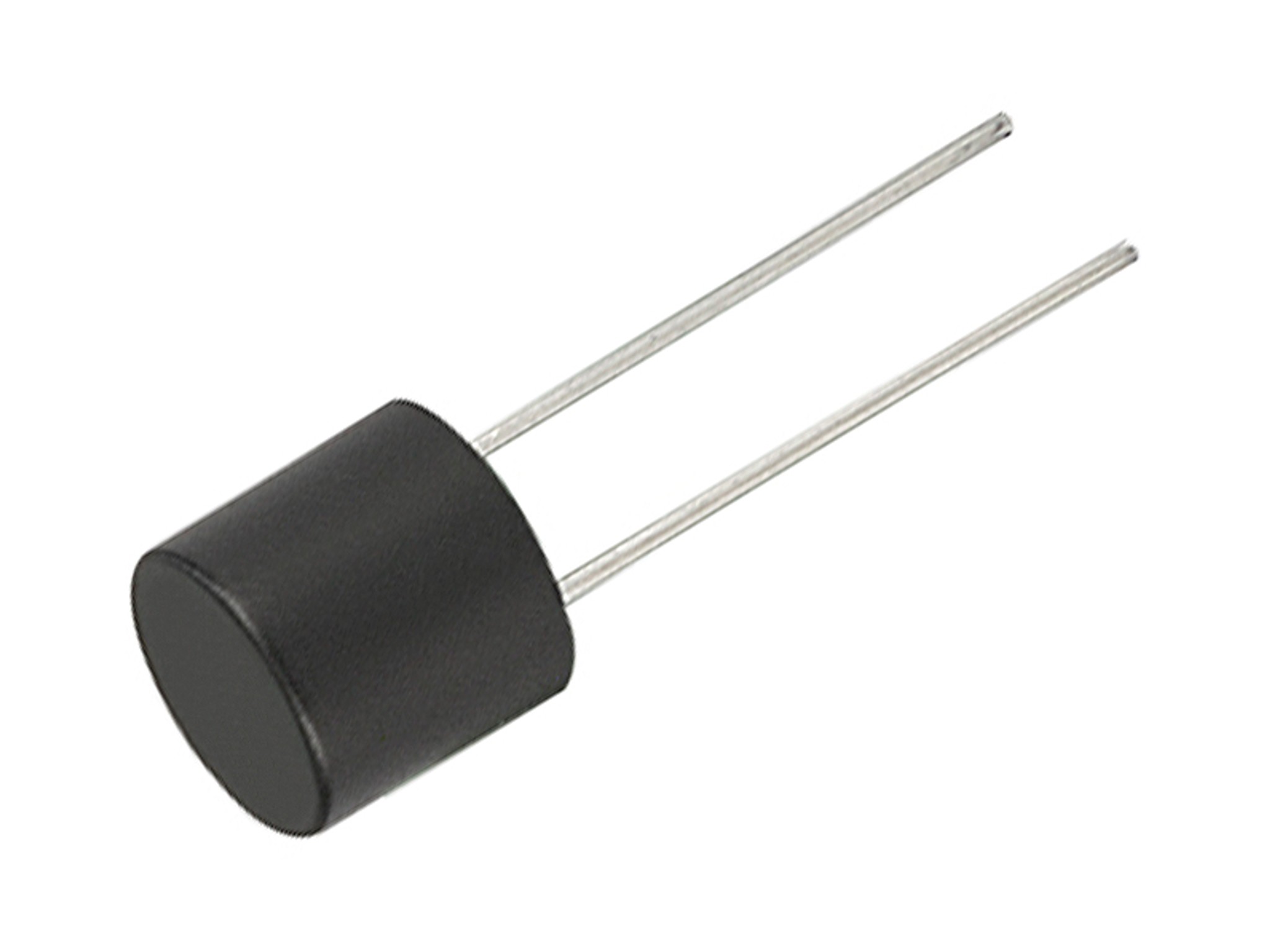
Miniature safety fuse in the TR5 enclosure



